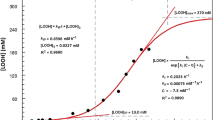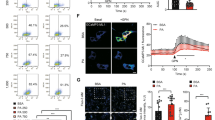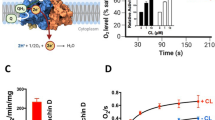Abstract
IT has been known for 17 years1 that d-α-tocopherol can protect rats from the lethal effects of carbon tetrachloride. Anti-oxidant protection implies that the reaction of the liver to the toxin involves destructive lipoperoxidation. Under certain circumstances, lipoperoxidation can be detected by following the evolution of malonaldehyde by means of the thiobarbituric acid (TBA) reaction. We have monitored malonaldehyde evolution in in vitro experiments utilizing the microsome-supernatant fraction of rat liver, and have found that carbon tetrachloride can act as a pro-oxidant in this system. Diethyl ether and heptane were inert. These in vitro findings support the hypothesis that the hepatotoxic chloroalkanes have as one of their vectors of toxicity the initiation of destructive lipoperoxidation. If carbon tetrachloride acts similarly in vivo, it should be possible to find supportive evidence. We have found that malonaldehyde is readily metabolized by rat liver mitochondria, hence the TBA reaction cannot be used as a tool in the search for evidence of lipoperoxidation in vivo. However, the appearance of malonaldehyde is only one index of destructive lipoperoxidation. It has been known for 20 years, from the work of Bolland and Koch2, that during the course of autoxidation of ethyl linoleate there occurs a rearrangement of double bonds into diene conjugation. The spectra of normal conjugated dienes, that is, molecules such as butadiene, are characterized by a very intense absorption, the so-called K-band3, at 215 to 250 mµ. (ref. 4). The spectra of peroxidized lipids are characterized by an intense K-band at 233 mµ, with a shoulder, due to ketone dienes, in the region from 260 to 280 mµ (ref. 2). The appearance of diene conjugation in peroxidized, unsaturated fatty acids, or their derivatives, is due to resonance following free radical attack on methylene bridges separating the double bonds in these compounds5. It should be borne in mind that microsomal lipid is largely phospholipid.
This is a preview of subscription content, access via your institution
Access options
Subscribe to this journal
Receive 51 print issues and online access
$199.00 per year
only $3.90 per issue
Buy this article
- Purchase on Springer Link
- Instant access to full article PDF
Prices may be subject to local taxes which are calculated during checkout
Similar content being viewed by others
References
Hove, E. L., Arch. Biochem., 17, 467 (1948).
Bolland, J. L., and Koch, H. P., J. Chem. Soc., 445 (1945).
Silverstein, R. M., and Bassler, G. C., Spectrophotometric Identification of Organic Compounds, 93 (John Wiley and Sons, Inc., New York, 1964).
Woodward, R. B., J. Amer. Chem. Soc., 64, 72 (1942).
Holman, R. T., Prog. in the Chem. of Fats and Other Lipids, 2, 51 edit. by Holman, R. T., Lundberg, W. O., and Malkin, T. (Academic Press, New York, 1954).
Butler, T. C., J. Pharmacol. Exp. Therap., 134, 311 (1961).
Wirtschafter, Z. T., and Cronyn, M. W., Arch. Environ. Health, 9, 186 (1964).
Rubinstein, D., and Kanics, L., Canad. J. Biochem., 42, 1577 (1964).
Author information
Authors and Affiliations
Rights and permissions
About this article
Cite this article
RECKNAGEL, R., GHOSHAL, A. Lipoperoxidation of Rat Liver Microsomal Lipids induced by Carbon Tetrachloride. Nature 210, 1162–1163 (1966). https://doi.org/10.1038/2101162a0
Issue Date:
DOI: https://doi.org/10.1038/2101162a0
This article is cited by
-
1-benzoyl-6-hydroxy-2,2,4-trimethyl-1,2-dihydroquinoline exerts a neuroprotective effect and normalises redox homeostasis in a rat model of cerebral ischemia/reperfusion
Metabolic Brain Disease (2022)
-
Multiresistance and lipid peroxidation system of thermoresistantShigella sonnei strains
Bulletin of Experimental Biology and Medicine (1996)
-
A function for α‐tocopherol: Stabilization of the microsomal membrane from radical attack during TPNH‐dependent oxidations
Lipids (1971)
-
Oxidation of α‐tocopherol to α‐tocopheryl quinone by carbon tetrachloride‐ethanol solvent
Lipids (1969)
Comments
By submitting a comment you agree to abide by our Terms and Community Guidelines. If you find something abusive or that does not comply with our terms or guidelines please flag it as inappropriate.



